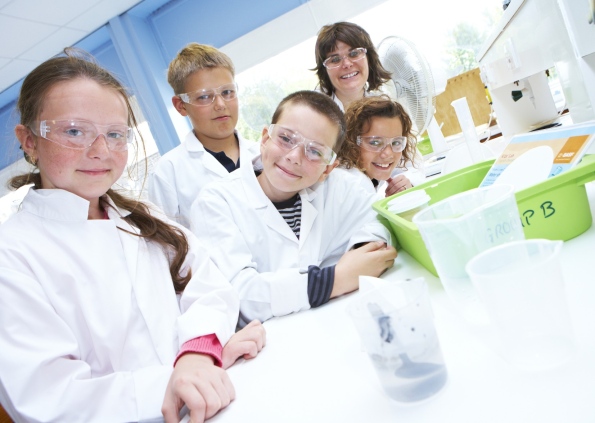A lab is often an engaging place to be where students can learn by actively performing experiments. Yet, science can often be dangerous, if you are not properly protected. With children, the dangers of scientific experiment seem to double, so it’s especially important that they learn how to stay safe in a potentially threatening area. Learning should be a positive experience; not a damaging one.
Safety Wear
Show the class the safety wear they will be wearing for the duration of their lesson, including aprons, goggles, and gloves. Children are much more likely to take this seriously if you treat them maturely and explain why each item is crucial to their safety. Be specific about the dangers for extra gravitas. Allocating a goggle monitor is a fantastic way to keep another set of eyes on the students, to make sure that everyone is keeping their equipment on at all times.
Safety Protocol
Conduct a grand tour of the classroom and make sure your class knows where the emergency equipment is. Introduce them to the first-aid kit, fire extinguisher, eye wash station, and emergency shower. Repeat that they are not to run unless an extreme emergency as laboratory furniture for schools is particularly dangerous, should you slip and fall.
Make Posters
Kids love making posters, if it means they don’t have to sit through a boring lesson! Get all the children to make safety posters to explain what each warning symbol means: explosive, flammable, toxic, or corrosive. Hang these creative pieces on the walls as a fun reference.
Experiment
Perform a simple but dramatic experiment in front of your class that uses some dangerous equipment. Comment as you go through what could happen if you did not follow safety procedures. If your experiment is impressive and looks dangerous then this will settle deeper in the children’s minds; that they can do cool stuff too, as long as they are safe and responsible in the classroom. An explosive experiment is one way to wake them up, first thing on a Monday morning!
Quiz
Allow for a question and answer session at the end of the lesson and quiz your students on what they have learned. Through this, not only will it review the information for the children, but it will also give you an idea of potential safety hazards you will have to watch out for or what the children did not understand. If the students ace the test, then you should be relatively assured that they are fine to conduct experiments. If there are big gaps in their knowledge, it might be worth a few more safety sessions to clear up any confusion.
You can incentivise this test to make sure the children do their best. Have a box of mini chocolates and alternatives for any students who have allergies or medical conditions which stop them from consuming dairy products. There’s nothing like chocolate to get a pupil working hard.
This guest article was written on behalf of Innova Solutions by freelance writer Francesca, who has an interest in education and child welfare.

